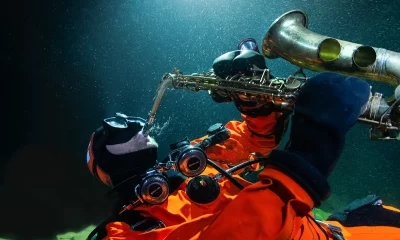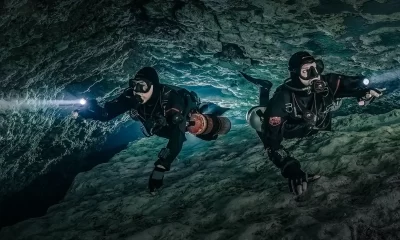Community
My Personal Experiences with HPNS on Five Sub-200 meter Dives
Text by Chen Qian, aka “Charlie.” Images and video courtesy of the author unless noted.
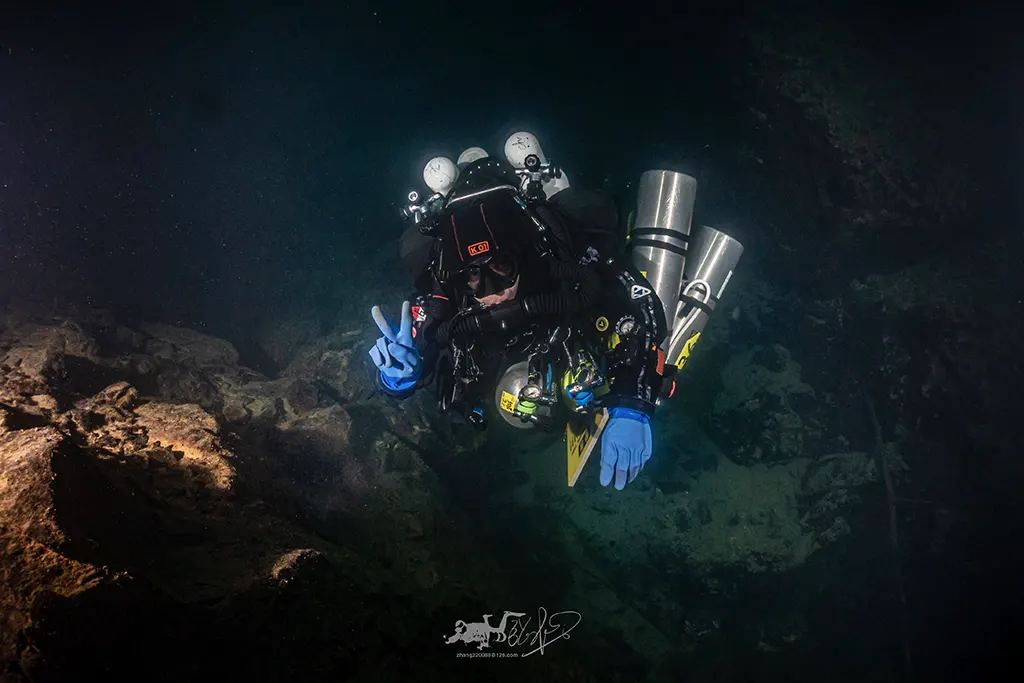
In a little more than a decade, 33-year old Chen Qian, aka “Charlie,” has gone to great lengths, er depths to satisfy what has become an overarching passion—deep cave exploration. He learned to dive in 2013 and in his words was “absolutely addicted.” Three years later, he quit his office job to become a full time World Underwater Discovery (WUD) recreational instructor. In 2017, he become a WUD tech instructor and learned to cave dive in Mexico, before returning to China to explore the country’s uber-deep cave systems.
Now having conducted approximately 500 cave dives; 21 beyond 150 meters/492 feet, and at least five beyond 200 m/656 ft, he has joined the ranks of small number of divers who are pushing the limits of our underwater envelope, at their own peril.
Though his youthfulness and relative inexperience may surprise or even shock you, those who know him, including WUD president Yuan Wang, and explorers Richard Harris and Craig Challen say he is not suffering from “zero to hero” syndrome, but instead, is a sincere and thoughtful, albeit uber-enthusiastic youthful diver, who has demonstrated he is willing to do the work required. Given the nature of Chinese caves and competitive Chinese culture, his pursuit of depth is not necessarily surprising.
Tragically, Charlie lost his wife, during a freak accident at Manatee Springs, Florida in 2019 during what was supposed to be a fun, easy cave dive, which resulted in him devoting himself even more to diving. Charlie reached out to us last year to share his deep diving experiences at Da Xing after reading a story in InDEPTH on High Pressure Nervous Syndrome (HPNS). Thus began a chain of correspondence, which resulted in this story.
Please note that the author discusses cave dives that are arguably high risk and require significant training, equipment and experience to conduct, and even then there are no guarantees. Don’t try this at home unless you are properly prepared, equipped and trained.—M2
I find some local Chinese technical diving communities putting the wrong emphasis on various topics, such as focusing too much attention on purchasing fancy equipment or debating which training organization is the best, and the like. I envy the open-minded and supportive community that you created with the now defunct aquaCORPS: The Journal for Technical Diving, and nowadays InDEPTH, where technical divers can share their thoughts and experiences with one another. I wish I had started reading it earlier. There are so many informative articles that resonate with me.
In particular, the article, “High Pressure Problems on Über-Deep Dives: Dealing with HPNS,” along with a recent talk by Dr. Richard Harris got me thinking about the sub-200 meter dives that I did recently. I would like to share some information with you and hope that your readers will find it useful.
First, a proper introduction. My name is Chen Qian, but people call me “Charlie.” For the past three years I’ve been diving at Da Xing Springs, China, the country of my birth. My goal has been to gain experience and explore the springs’ unknown area following the Wet Mules’ project there in 2015.
Richard Harris and Craig Challen explored the south entrance to 213 m/700 ft and found the main shaft that had become a vertical structure after originally presenting as a horizontal one. At that time, Harris and his team were not prepared to conduct a longer bottom time dive with a potentially deeper area. Dr. Harris told me that he and Craig had planned to return to Da Xing at some point, but when travel became impossible because of Covid, they were occupied with their project in Pearse Resurgence.
I was motivated to continue Harris and Challen’s great achievements, not only for the cave exploration, but also because of my wife, Zhou Min, aka “Daisy,” who died in a freak accident during a dive at Manatee Springs, Florida in 2019. You might have heard about the incident. I was devastated. We had been training and diving in Florida since 2017, the year I got cave certified. My original cave instructor was Kelvin Davidson, the owner of Third Dimension Diving in Tulum, Mexico. At the time, I was a recreational and technical foundation diving instructor. My wife was my assistant in 2019, and she helped me manage class schedules and maintain good relationships with my students. We worked really well together.

I was in so much pain following my wife’s accident, that I didn’t dive again for seven months. Then I made up my mind to honor my wife’s love of cave diving and set a personal goal of first diving to 158 m/518 ft and then extending my range and diving to 258 m/847 ft, inspired by the occasion of her birthday on May 8 or 5–8. I have spent the last three years working hard to accomplish this goal.
Determined to honor my spiritual promise to my wife that I would be a better technical diver, and implement my 258 m/847 ft goal, I quit smoking and worked out hard to lose the 35 pounds of fat that I had gained in one year of emotional faltering. After all the changes, I succeeded in diving to 158 m/518 ft and then extended my explorations all the way to 258 m at Da Xing Springs. Those three years of committed deep cave exploration has been my redemption from the 2019 accident. Now I have fallen in love with deep diving and plan to work hard to do more deep exploration.
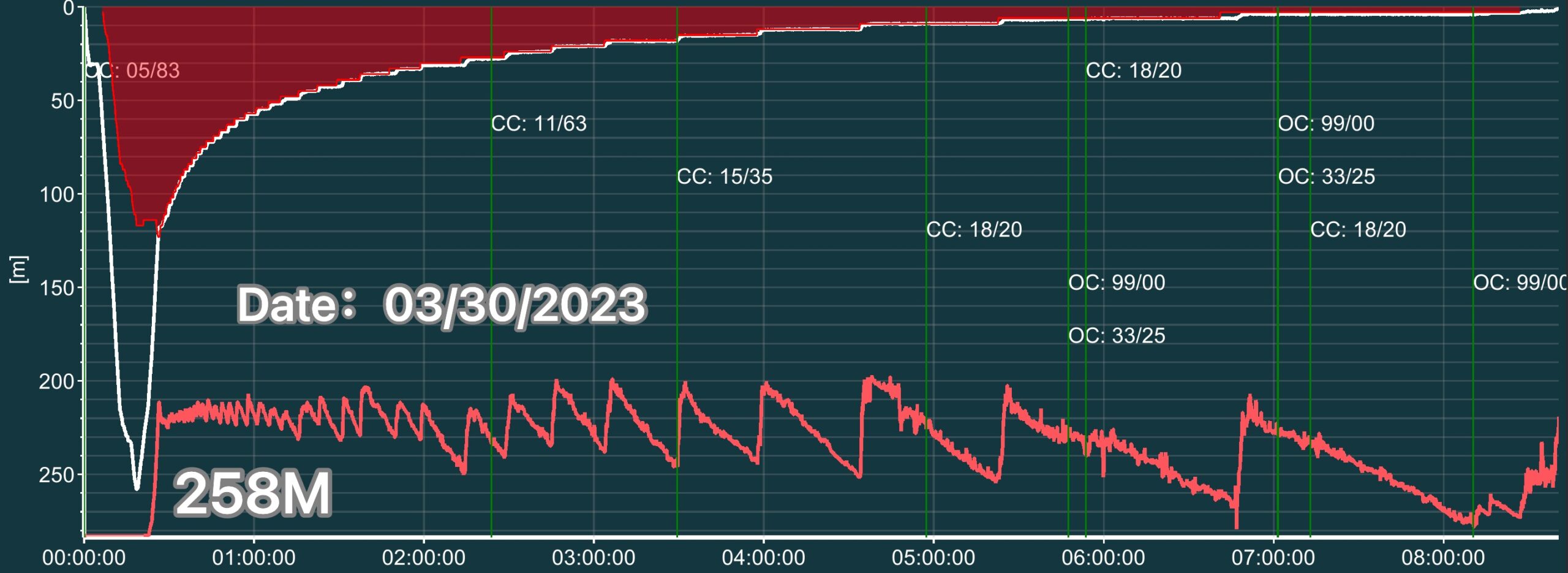
Experiencing HPNS
I would like to share with you my experience regarding High Pressure Nervous Syndrome (HPNS). I have made twenty-one sub-150 m/492 ft dives over the last year (2022/2023) on my JJ-CCR with open circuit bailout. I could clearly feel HPNS symptoms on some of the deepest of those dives (See Table). For the 184 m/604 ft, 193 m/633 ft, and the 212 m/695 ft dives, my descent rate in the main shaft from 30 m/100 ft to 200 m/656 ft was about 21 m/70 ft per minute.
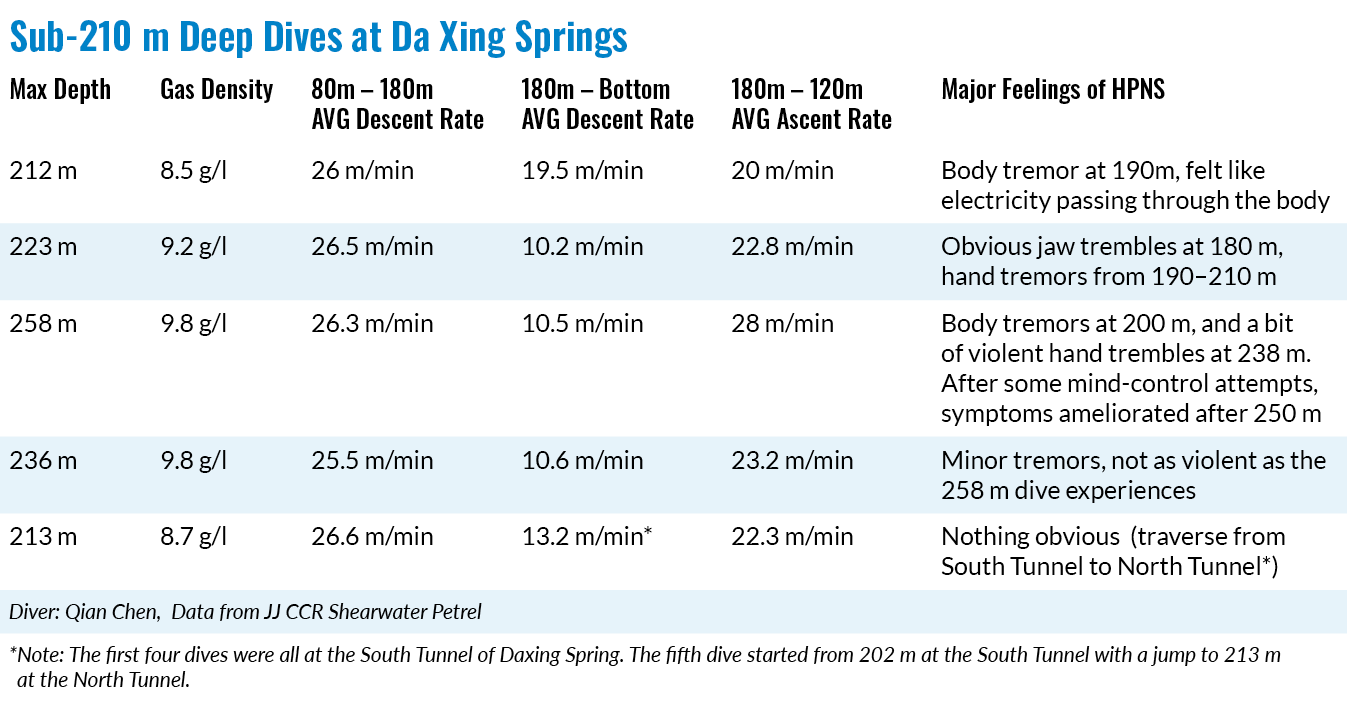
I could feel body tremors during the descents and had some problems with my wing and dry suit inflation at that descent rate. The HPNS was most noticeable during the 223 m/732 ft dive. My dive buddy didn’t inflate his BC early enough causing him a hard landing on the 215 m/705 ft bottom, which stirred up the silt making the visibility really bad. The terrible visibility plus high gas density caused us more WOB related problems. I could feel the accumulated effects of HPNS and CO2 as I tried to tie off the line. So I called the dive when reaching 223 m/732 ft. More on this later.

I had a team of five support divers, four of them capable of diving to 120 m/392 ft, who were stationed at various depths down to 110 m/359 ft. However, worried that too many divers might jeopardize safety procedures, I teamed up with my buddy for the dives to 212 m/700 ft and 223 m/732 ft, and put a backup CCR and open circuit bailout bottles at different depth to replace the role of support divers.
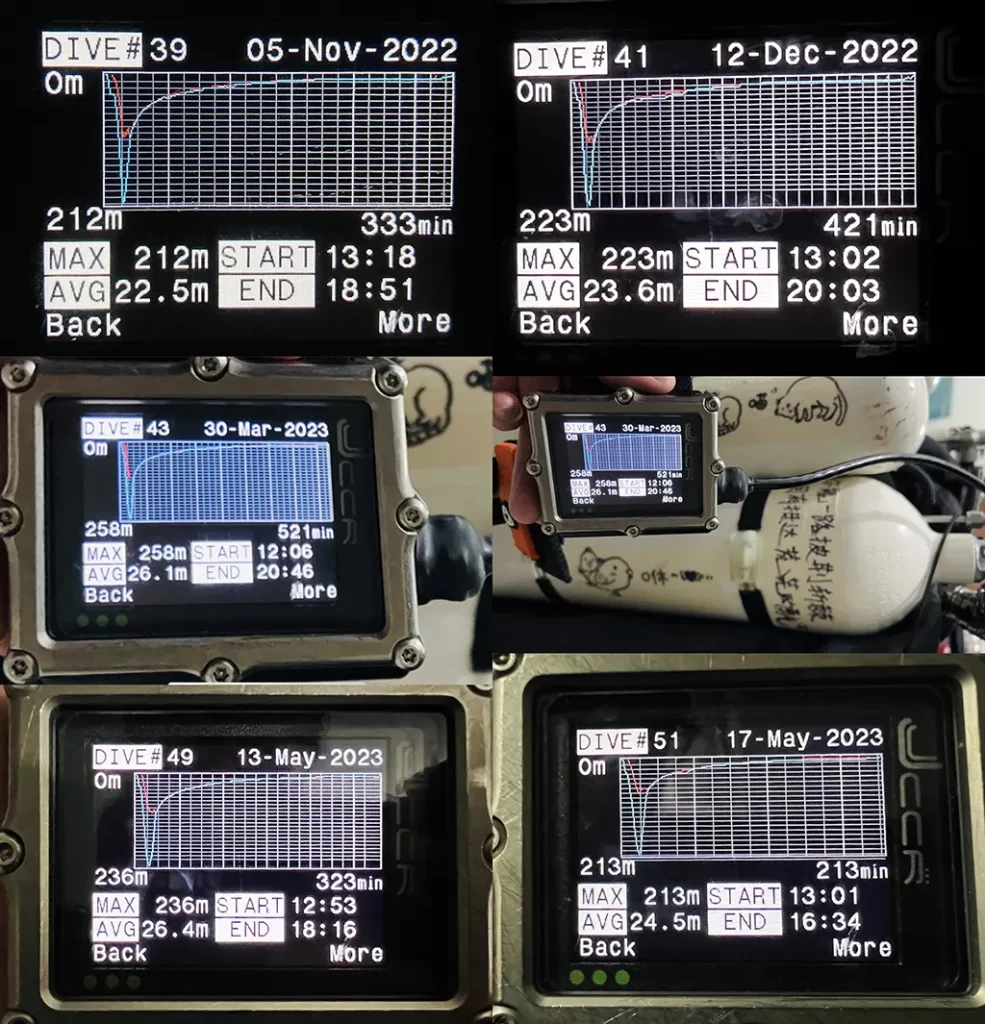
Because of the difficulties my dive buddy had on the last dive, I decided it would be safer for me to make the 258 m/846 ft alone. [Ed. note: Global Underwater Explorers does not sanction solo diving. Furthermore, solo CCR diving was recently addressed by Rebreather Forum 4 in a consensus statement which reads, “The forum recognizes that solo diving may increase the likelihood of a fatality in the event of a rebreather diving incident.”]
On my last 258 m/846 ft dive which I conducted on March 30, 2023, I used faster descent rates, averaging around 25 m/82 ft-per-minute. The tremors during the descent were minor and acceptable. But when I reached 238 m/781 ft, my hands were trembling and my movements started to become less efficient. Fortunately, the beautiful slopes and the horizontal cave structures from 230 m to 250 m (755–820 ft) offered some relief, and with enough bottom time to swim a bit which relieved some tension and put me in good spirits. Although I realized the tremors were uncontrollable but slowing down, my movements and focusing my mind did help to minimize the negative effects of them.
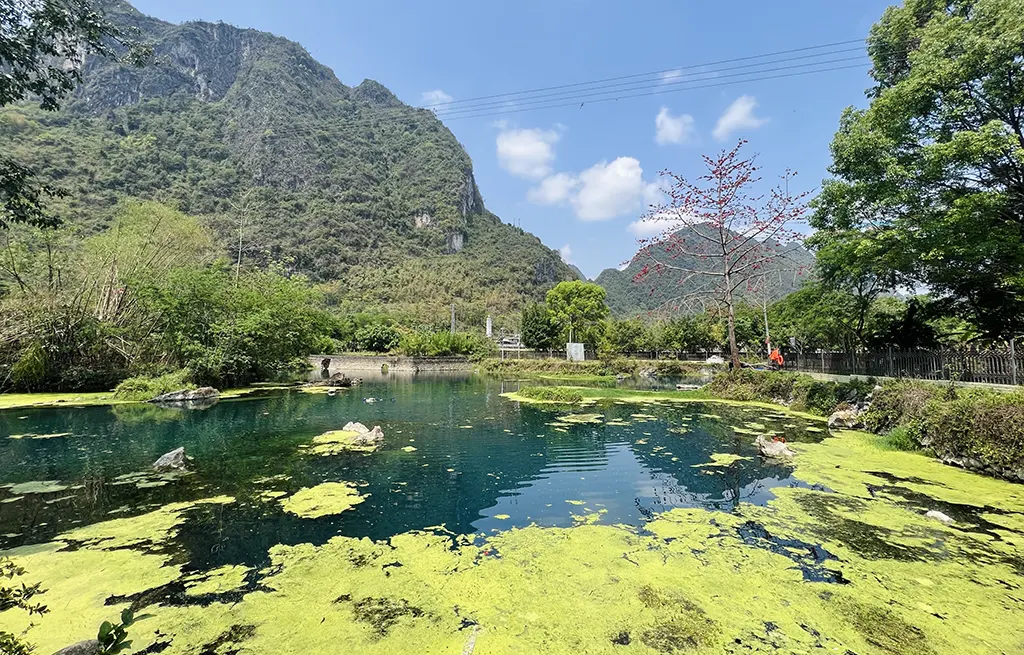
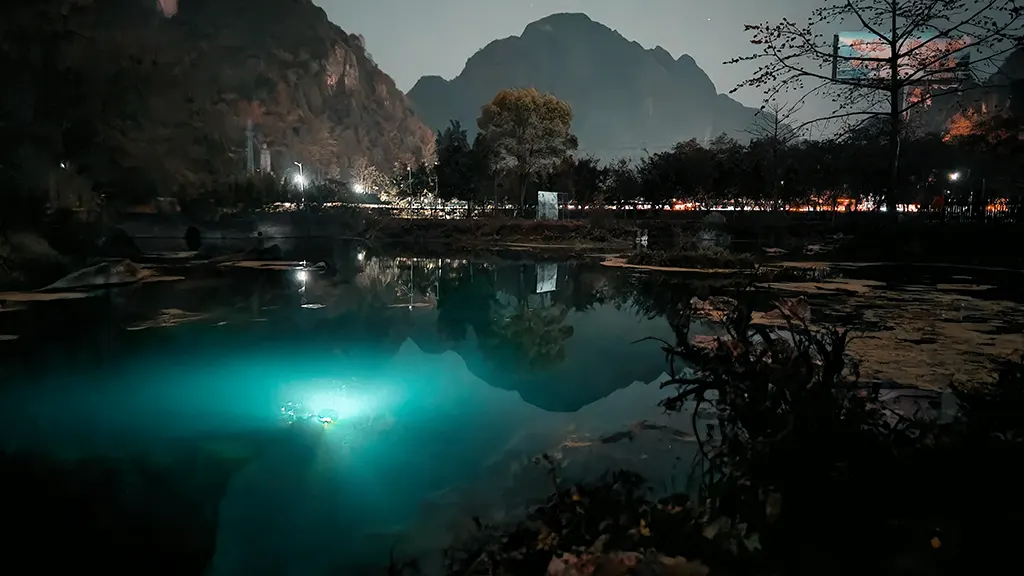
As I approached 260 m/853 ft, I grabbed my reel to stop, and limited the depth to 258 m to honor my wife (her May 8 birthday). I used her reel on the dive. It was my way of taking her diving with me. I stared down a tunnel shaft that easily dropped 280 m/919 ft and beyond, and thought, “I’m leaving that for future exploration.” My goal this year was to keep my promise and honor my wife. Her love for cave diving is one of the reasons I will keep exploring. It was a beautiful moment. I turned the dive.
However, the increased work of breathing (WOB) was still a problem. According to my JJ-Shearwater log, the gas density was close to 10 grams/liter, which is dangerously above the 6.0 g/l threshold where the risk of a negative outcome dramatically increases. However, particularly after reading the articles about Sheck Exley, I was afraid that the HPNS would likely cause larger problems and consequently I used a trimix 5.5/83 mix diluent, which contained 10.5% nitrogen. I could clearly feel the symptoms, including hand tremors and shaking in my body.
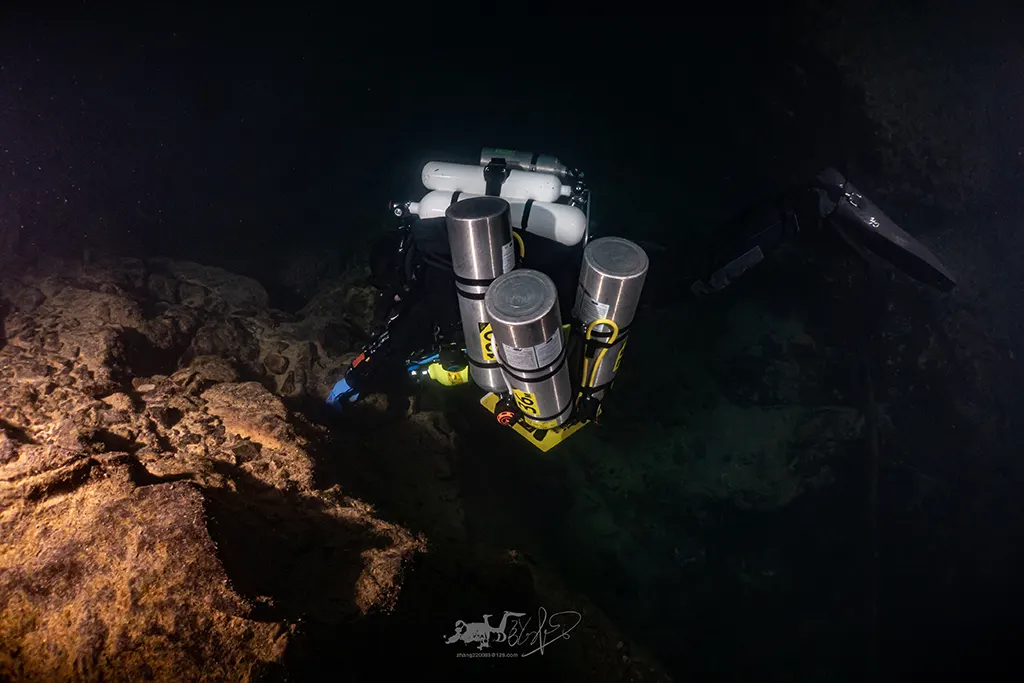
But subsequently after talking to Dr. Harris about gas mixtures, I think trimix 4/90 [Used by the wet Mules for their 245 m/804 ft dive at Pearse Resurgence, and eventually experimented with hydrogen to reduce breathing gas density] would be better for me to reduce gas density. Now I know it was a mistake to fear HPNS that much at the cost of WOB problems.
After my 258 m/846 ft dive, I decided to test some new descent and bottom techniques, which Dr. Richard Harris shared with me. Thus I did a 236 m/774 ft dive and 213 m/699 ft dive in May 2023, before the rainy season, which makes deep cave diving too dangerous. As it can be seen on the table, my last dive to 213 m was my first sub-200M dive where I did not notice HPNS. I guess slowing down around 180 m/591 ft and the environment familiarity both helped much. During the dive I confirmed a traverse between South tunnel and North tunnel to be only 9 meters (from 202M at South to 210M at North). While the shallower traverse from South to North at 120M is almost 50M!
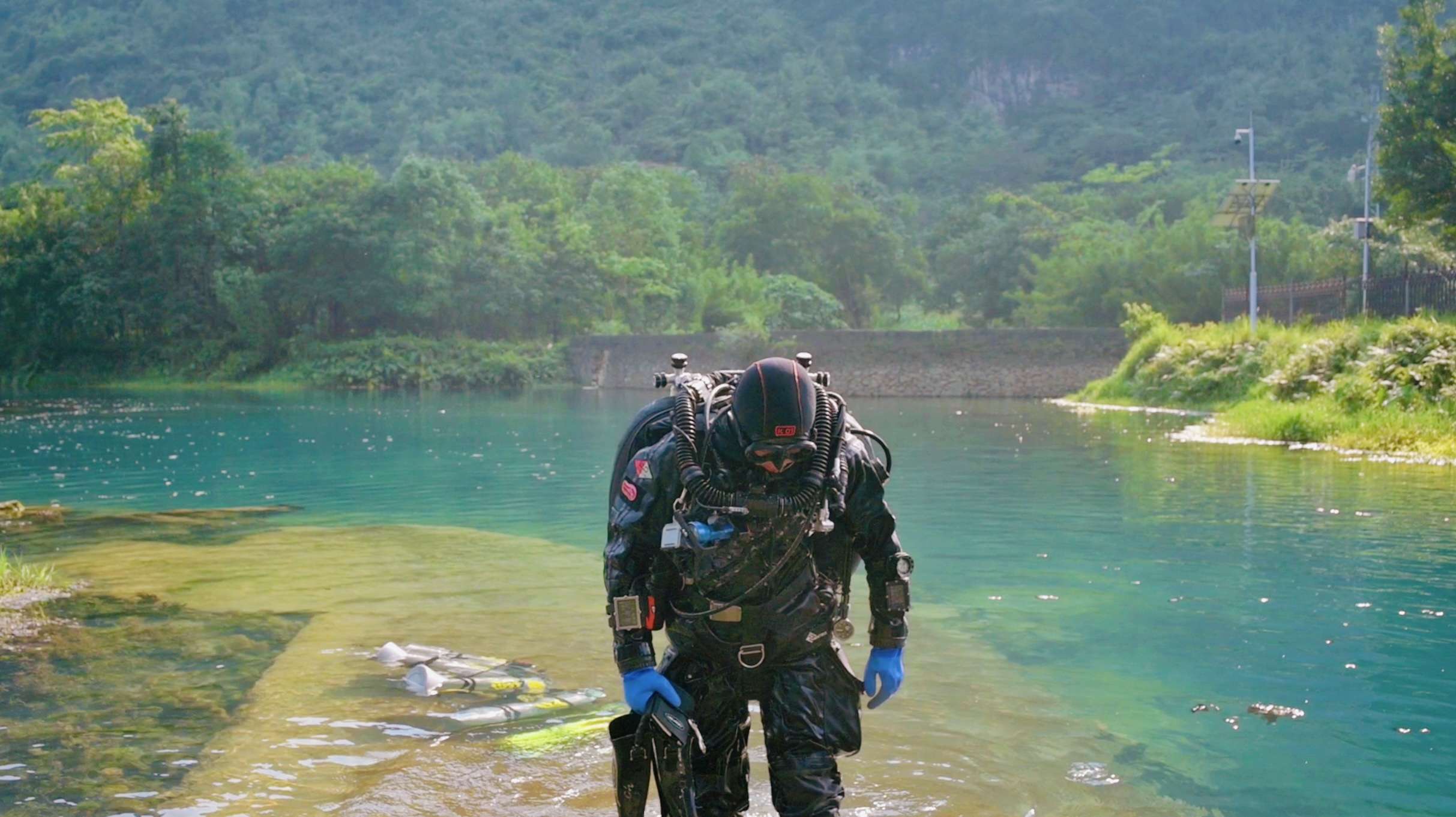
Rescuing My Dive Buddy
Let me share my rescue experience as well. As I said, at our 223m/732 ft dive my buddy stirred up silt at around 215 m/705 ft making the visibility really bad. I couldn’t find a decent spot to tie off my reel in the low visibility, so I locked my reel and left it on the corner against the wall. I then signaled my buddy and called the dive, noticing that his breathing was a bit problematic.
However, when we exited the cave and arrived at the cavern zone at 36 m/118 ft, my buddy made a confusing move—he opened up his hood, letting in some 19º water. This caused a real problem. When the cold water poured into the ear, his otolith (ear crystal) fell out of his inner ear causing him to lose his sense of equilibrium. At that point, our time to surface (TTS) was more than 300 minutes. My buddy started to make painful noises. He switched to his backmount open circuit bailout gas, started vomiting, and could not maintain neutral buoyancy.
The rest of the dive was one of the toughest times I have ever experienced. I dragged him by the manifold, switched bail out gasses for him at the proper depths and controlled his position to hold the efficient deco stops, and tried my best to calm him and prevent him from drowning while he was vomiting. During that time I thought his primary JJ-CCR rebreather might have encountered some kind of failure, but why couldn’t he breathe with his chest mounted CHOPtima backup rebreather? I anxiously watched him try several times to breathe through a rebreather but all ended up violently vomiting. He could only breathe with open circuit bailout gas!
We surfaced six and half hours later, and he recovered after going to a hospital where the doctor said it was otolithiasis, which causes vestibular dizziness. Later, he told me that his WOB related problems at 223 m/732 ft, where the visibility became extremely low by silt, clearly made him too nervous that his breathing rhythm was disturbed, leading to carbon dioxide penetration of the rebreather absorbent. The consequent hypercapnia gave him many symptoms of “not thinking clearly”, leading him to believe that some cold water might “help” clear his mind at 36m. He did many dil flushes before he switched to open circuit bailout, but it apparently didn’t help.
After talking with Dr Harris and Craig, I think inner ear decompression sickness (DCS) also played a role in this incident. Many days before the dive, my buddy once told me he had some minor tinnitus problems in ears. Nothing wrong with his general fitness condition, so we overlooked it. It is possible that his inner ear was already injured before the dive during his personal weight lifting training. The high inert gas supersaturation level around the inner ear where blood perfusion was low, along with the muscle contraction due to the cold water, might have contributed to the incident.
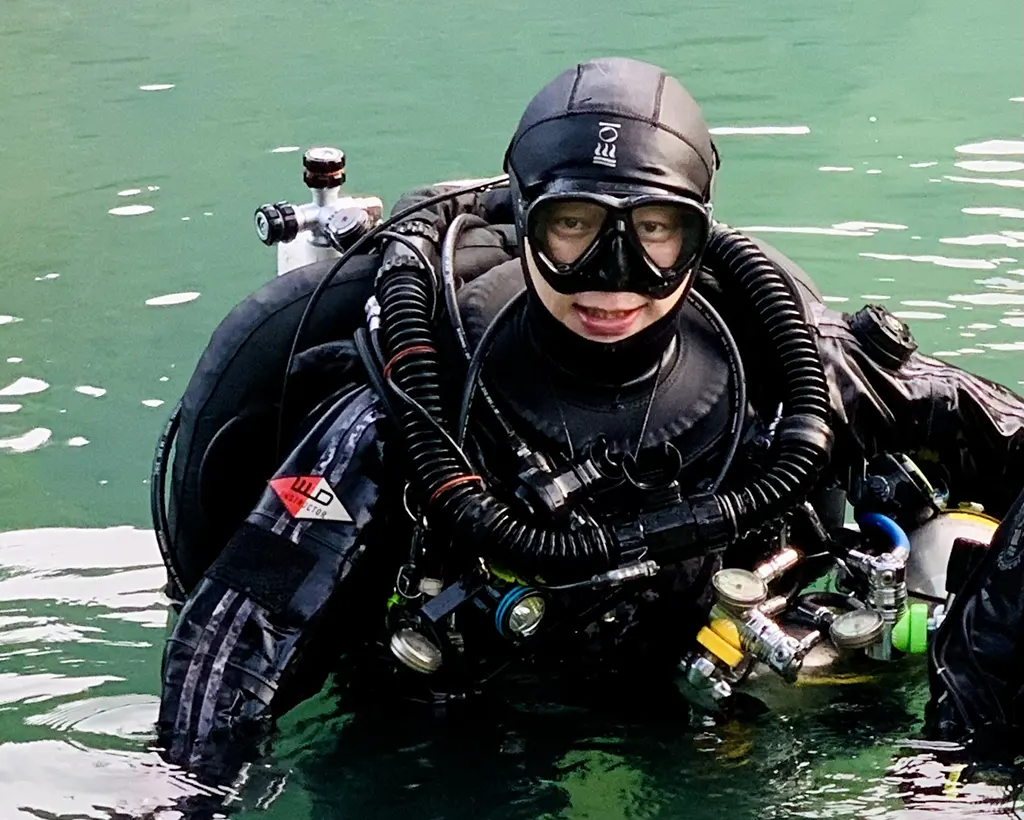
In Conclusion
Thank you for letting me share my experiences. I have been reading InDEPTH articles online since April 2023. They’re very informative and enlightening. I want to thank you for your perseverance in writing and editing all those amazing articles and interviews for the last 30 years. I wish I could have read them earlier, but it’s never too late!
To date, I have done two sub-200 m/656 ft cave explorations with a buddy and three solo sub-200 m cave explorations. Because of the lack of information, I made some mistakes regarding the bottom operating procedures, but now I have made good progress after talking to Harry and Craig—specifically I will use a 4/90 mix, maintain a lower setpoint at the bottom, and descend slower from 180 m. They are so selfless and generous in giving advice to young explorers, which gives me a different way of thinking about deep cave diving. I am also grateful for the InDEPTH story “Celebrating Sheck Exley.” I found this amazing article and Sheck Exley’s narratives greatly inspiring and motivating.
What I did was personal and cannot compare to the efforts of the pioneers, but I wish to contribute to the big community, globally as a whole family. The pandemic made many of my acquaintances quit technical diving for some jobs that pay more. I want to stay and continue to push forward. Partially because of the commitment and connection with my deceased wife in technical diving, but also because I truly enjoy it, and want to improve my technique and experience in honor of all the great pioneers that I read from your blog, who feel like friends transcending dimensions of time and space.
As far as the future, I had planned to further explore Da Xing Springs this year in January with Harry and Craig from the Wet Mules. Unfortunately, the Chinese authorities closed Da Xing Springs after cave explorer Han Ting’s diving accident in October 2023. The good news is that we might be able to restart the exploration project in late March. Craig and Andrew (Andy) Oakeley plan to join me and they have their Chinese visas. There are so many new parameters and underwater techniques to be tested. I really look forward to it.
Meanwhile, I have written some articles in Chinese to give advice to future explorers and to share my personal experiences with all. How I wish the Chinese technical diving community could collaborate with each other and share information publicly like what InDEPTH does!
Return to our China Tech story package: HOMEGROWN CHINA TECH
DIVE DEEPER
InDEPTH: “High Pressure Problems on Über-Deep Dives: Dealing with HPNS” by Reilly Fogarty
InDEPTH: Celebrating Sheck Exley
aquaCORPS: What happened to Sheck Exley? by Bill Hamilton, Ann Kristovich And Jim Bowden. Accident analysis report from aquaCORPS #9 Wreckers (JAN95)
InDEPTH: Diving Beyond 250 Meters: The Deepest Cave Dives Today Compared to the Nineties By Michael Menduno and Nuno Gomes
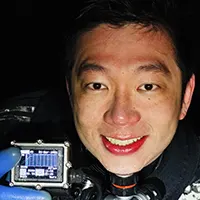
Thirty-three year-old Chen Qian (Charlie) is a passionate deep cave explorer who has spent two years in Da Xing Spring, China, testing different deep diving techniques and deco approaches. He had done five 210+ meter explorations into the cave, including his 258 m/846 ft dive at the South Tunnel, which was previously explored to 213 m/699 ft by the Wet Mules’ Dr. Richard Harris and Dr. Craig Challen in 2015. Charlie is also a WUD technical instructor, and instructor trainer wishing to pass his knowledge and experiences to future explorers. His recent dream is to explore more deep caves in different countries. He can be reached at: [email protected].


























